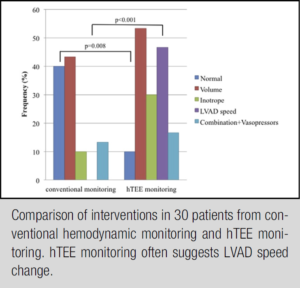Wow, does Swan-Ganz cardiac monitoring miss a lot, according to our interpretation of Bahatyrevich et al, “Is hemodynamic transesophageal echocardiography needed for patients with left ventricular assist device?” (J Thorac Cardiovasc Surg 2018;155:1071-7).
What they did
They monitored 30 HeartMate II LVAD-implanted patients using Swan-Ganz catheter and ImaCor hemodynamic transesophageal echo (every 1-3 hours) simultaneously. They collected 147 hTEE studies and compared the differences between methodologies.
Hemodynamic ultrasound caught so much more
ImaCor found abnormalities in 26 of the 30 patients (87%). Swan-Ganz found none. Wow.
Among 30 patients, ImaCor found:
- 19 with a shift in the interventricular septum;
- 22 with abnormal ventricular volume status;
- 9 with right ventricular failure; and,
- 14 need an LVAD speed adjustment; and,
Argh!
Talk about first-mover advantage! Study after study shows how the ImaCor hemodynamic ultrasound method represents true cardiac function, ventricular volume status, and septal position in
patients with a left ventricular assist device.
Old habits are hard to break. Hemodynamically distressed patients need more.
Only you can decide if this article is worth sharing with your hospital – chances are, your fellow decision makers might miss this study. Share it, call us – something!






